Mechanical Behavior of Single Patch Composite Repaired Al Alloy Plates: Experimental and Numerical Analysis
Abstract
:1. Introduction
2. Experimental Details
2.1. Material and Specimen Preparation
2.2. Test Procedures
2.3. Results and Discussion
2.3.1. Tensile Strength
2.3.2. Damage Observation in Specimens
3. Finite Element (FE) Model Analysis
3.1. Finite Element Model
3.2. Damage Criteria and Progressive Damage Model
3.3. Explaining Damage Mechanism by Using Simulations
4. Conclusions
Author Contributions
Funding
Acknowledgments
Conflicts of Interest
References
- Li, G.; Hedlund, S.; Pang, S.S.; Alaywan, W.; Eggers, J.; Abadie, C. Repair of damaged RC columns using fast curing FRP composites. Compos. Part B Eng. 2003, 34, 261–271. [Google Scholar] [CrossRef]
- Sun, W.; Xu, P.; Yang, Y. Development of a simplified bond model used for simulating FRP strips bonded to concrete. Compos. Struct. 2017, 171, 462–472. [Google Scholar] [CrossRef]
- Hawileh, R.A.; Musto, H.A.; Abdalla, J.A.; Naser, M.Z. Finite element modeling of reinforced concrete beams externally strengthened in flexure with side-bonded FRP laminates. Compos. Part B Eng. 2019, 173, 106952. [Google Scholar] [CrossRef]
- Sun, F.J.; Pang, S.H.; Zhang, Z.W.; Fu, F.; Qian, K. Retrofitting Seismically Damaged Steel sections encased Concrete Composite Walls using Externally Bonded CFRP Strips. Compos. Struct. 2020, 236, 111927. [Google Scholar] [CrossRef]
- Toutanji, H.; Dempsey, S. Stress modeling of pipelines strengthened with advanced composites materials. J. Thin Walled Struct. 2001, 39, 153–165. [Google Scholar] [CrossRef]
- Mahdi, E.; Eltai, E. Development of cost-effective composite repair system for oil/gas pipelines. Compos. Struct. 2018, 202, 802–806. [Google Scholar] [CrossRef]
- Rohem, N.R.F.; Pacheco, L.J.; Budhe, S.; Banea, M.D.; Sampaio, E.M.; De Barros, S. Development and qualification of a new polymeric matrix laminated composite for pipe repair. Compos. Struct. 2016, 152, 737–745. [Google Scholar] [CrossRef]
- Chester, R.J.; Walker, K.F.; Chalkley, P.D. Adhesively bonded repairs to primary aircraft structure. Int. J. Adhes. Adhes. 1999, 19, 1–8. [Google Scholar] [CrossRef]
- Jones, R.; Lorrie, M. Application of constitutive modelling and advanced repair technology to F111C aircraft. Compos. Struct. 2004, 66, 145–157. [Google Scholar] [CrossRef]
- Katnam, K.B.; Da Silva, L.F.M.; Young, T.M. Bonded repair of composite aircraft structures: A review of scientific challenges and opportunities. Prog. Aerosp. Sci. 2013, 61, 26–42. [Google Scholar] [CrossRef]
- Truong, V.H.; Byeong-Su, K.; Rene, R.; Jin-Hwe, K. Cohesive zone method for failure analysis of scarf patch-repaired composite laminates under bending load. Compos. Struct. 2019, 222, 110895. [Google Scholar] [CrossRef]
- Grammatikos, S.A.; Evangelos, Z.K.; Theodore, E.M.; Alkiviadis, S.P. On the fatigue response of a bonded repaired aerospace composite using thermography. Compos. Struct. 2018, 188, 461–469. [Google Scholar] [CrossRef]
- Heshmati, M.; Reza, H.; Mohammad, A.E. Environmental durability of adhesively bonded FRP/steel joints in civil engineering applications: State of the art. Compos. Part B Eng. 2015, 81, 259–275. [Google Scholar] [CrossRef]
- Chen, T.; Zhao, X.L.; Gu, X.L.; Xiao, Z.G. Numerical analysis on fatigue crack growth life of non-load-carrying cruciform welded joints repaired with FRP materials. Compos. Part B Eng. 2014, 56, 171–177. [Google Scholar] [CrossRef]
- Fujimoto, S.E.; Sekine, H. Identification of crack and disbond fronts in repaired aircraft structural panels with bonded FRP composite patches. Compos. Struct. 2007, 77, 533–545. [Google Scholar] [CrossRef]
- Benyahia, F.; Aminallah, L.; Albedah, A.; Bachir, B.B.; Achour, T. Experimental and numerical analysis of bonded composite patch repair in aluminum alloy 7075 T6. Mater. Des. 2015, 73, 67–73. [Google Scholar] [CrossRef]
- Albedah, A.; Sohail, M.A.; Khan, M.; Bachir, B.B.; Bel, A.B.B.; Faycal, B. Effect of the patch length on the effectiveness of one-sided bonded composite repair for aluminum panels. Int. J. Adhes. Adhes. 2018, 81, 83–89. [Google Scholar] [CrossRef]
- Ouinas, D.; Bouiadjra, B.B.; Serier, B. The effects of disbonds on the stress intensity factor of aluminium panels repaired using composite materials. Compos. Struct. 2007, 78, 278–284. [Google Scholar] [CrossRef]
- Ahmed, S.; Erik, T.T.; Thomas, S.; Sagar, M.D.; Jennifer, R.M. Integration of carbon nanotube sensing skins and carbon fiber composites for monitoring and structural repair of fatigue cracked metal structures. Compos. Struct. 2018, 203, 182–192. [Google Scholar] [CrossRef]
- Pradhan, S.S.; Mishra, U.; Biswal, S.K. Experimental study on mechanical performance of cracked aluminum alloy repaired with composite patch. Mater. Today Proc. 2020. [CrossRef]
- Maleki, A.; Saeedifar, M.; Ahmadi Najafabadi, M.; Zarouchas, D. The fatigue failure study of repaired aluminum plates by composite patches using acoustic emission. Eng. Fract. Mech. 2017, 210, 300–311. [Google Scholar] [CrossRef]
- Hart, D.C.; Bruck, H.A. Effects of plasticity on patched and unpatched center crack tension specimens. Exp. Mech. 2020, 60, 345–357. [Google Scholar] [CrossRef]
- Bouzitouna, W.N.; Oudad, W.; Belhamiani, M.; Belhadri, D.E.; Zouambi, L. Elastoplastic analysis of cracked Aluminum plates with a hybrid repair technique using the bonded composite patch and drilling hole in opening mode I. Fract. Integrità Struct. 2020, 14, 256–268. [Google Scholar]
- Yen, C.F. Ballistic impact modeling of composite materials. In Proceedings of the 7th International LS-DYNA Users Conference, Dearborn, MI, USA, 19–21 May 2002; Volume 6, pp. 15–23. [Google Scholar]


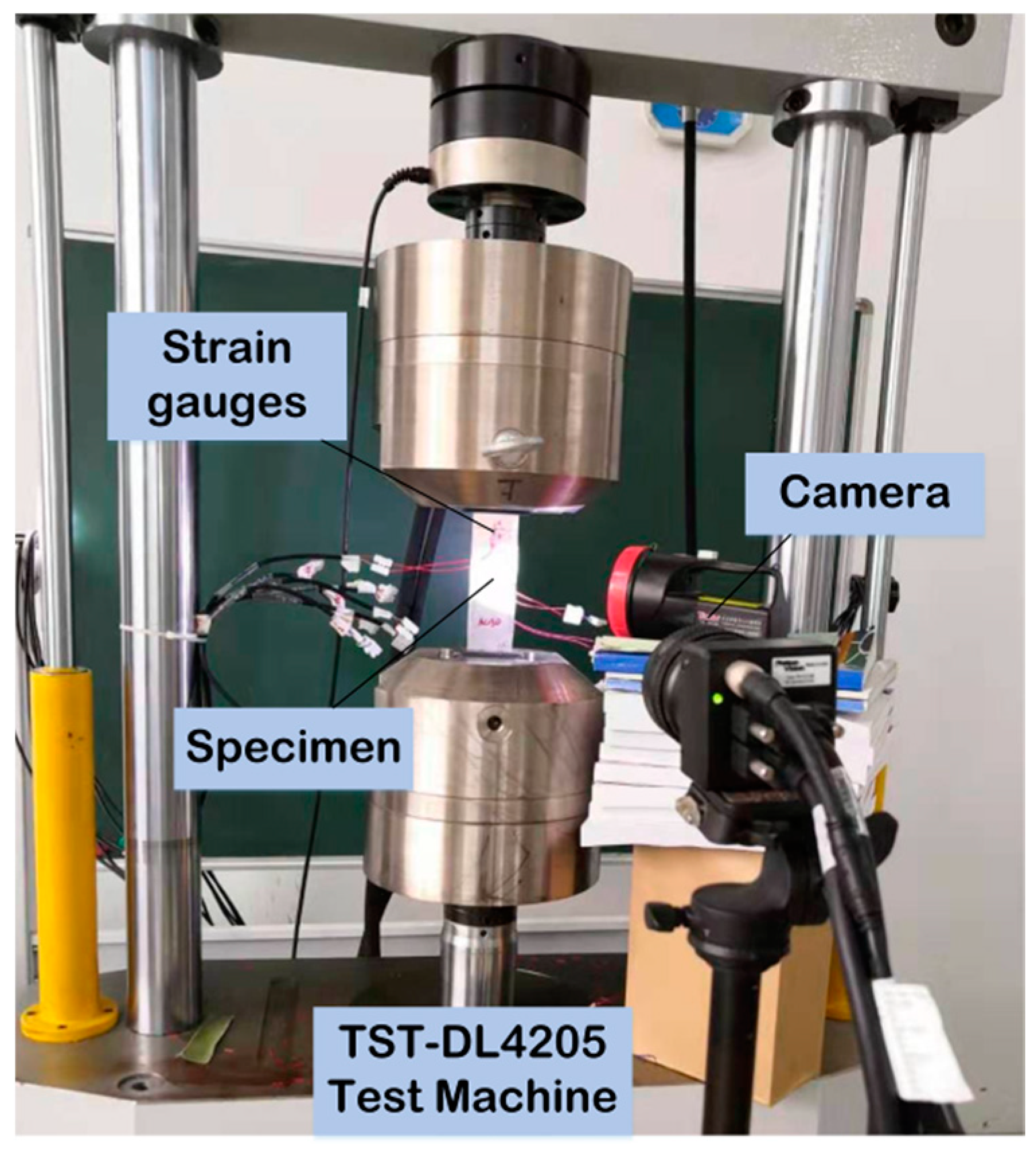
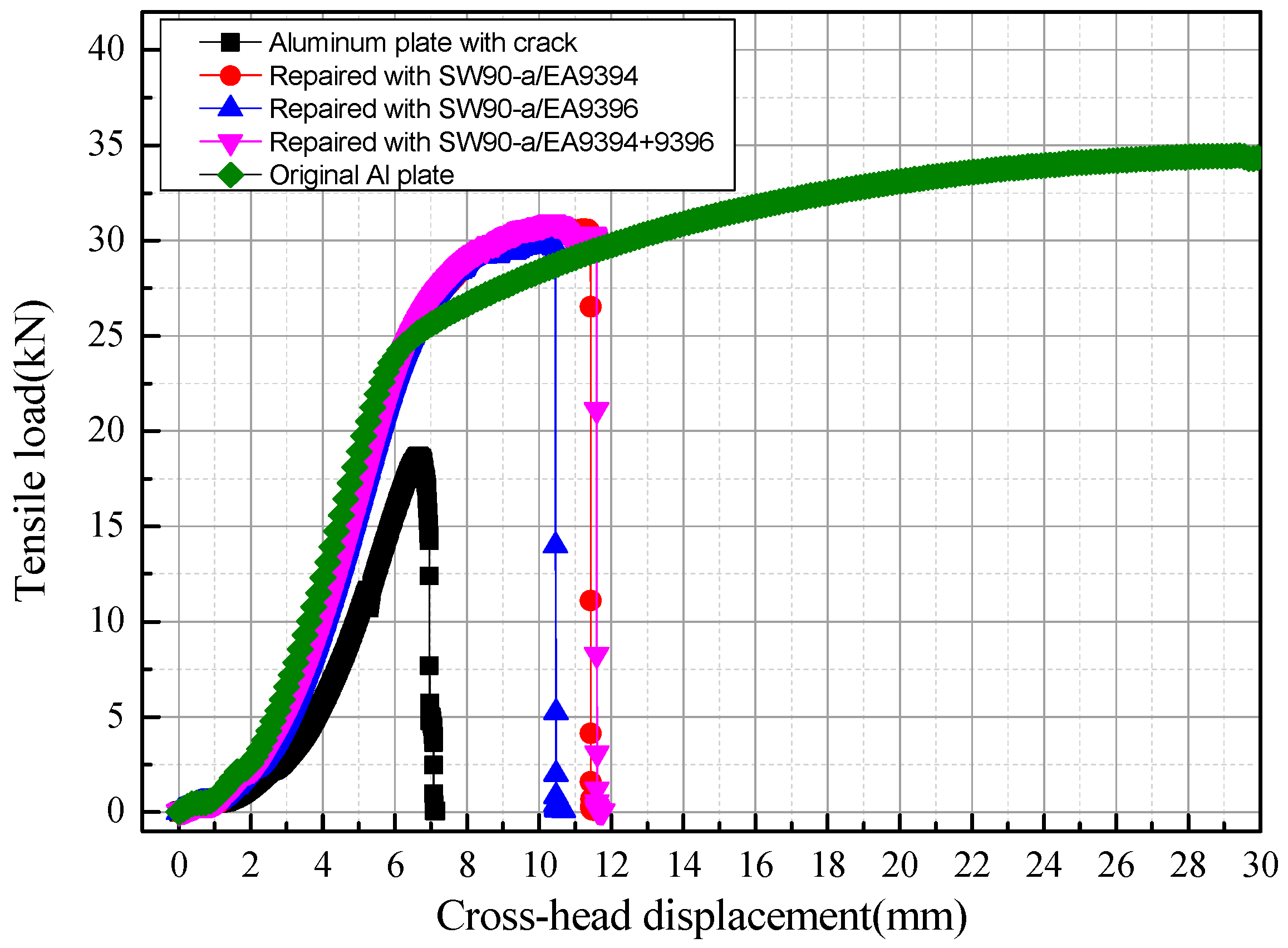
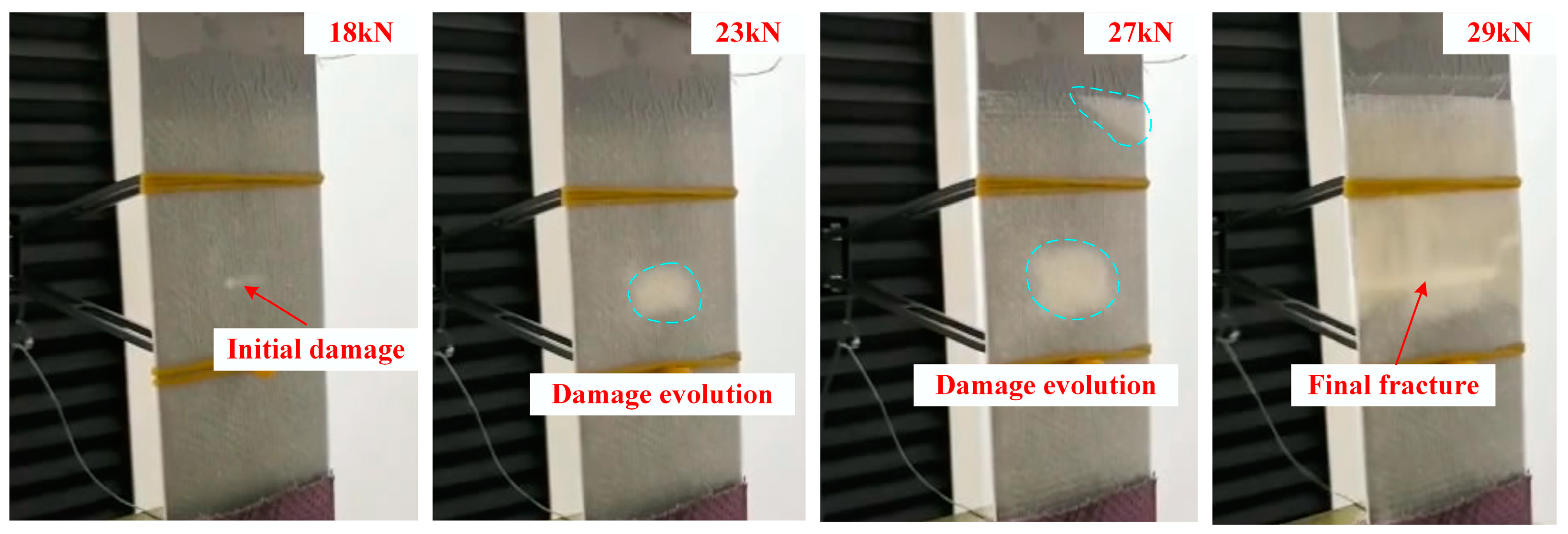
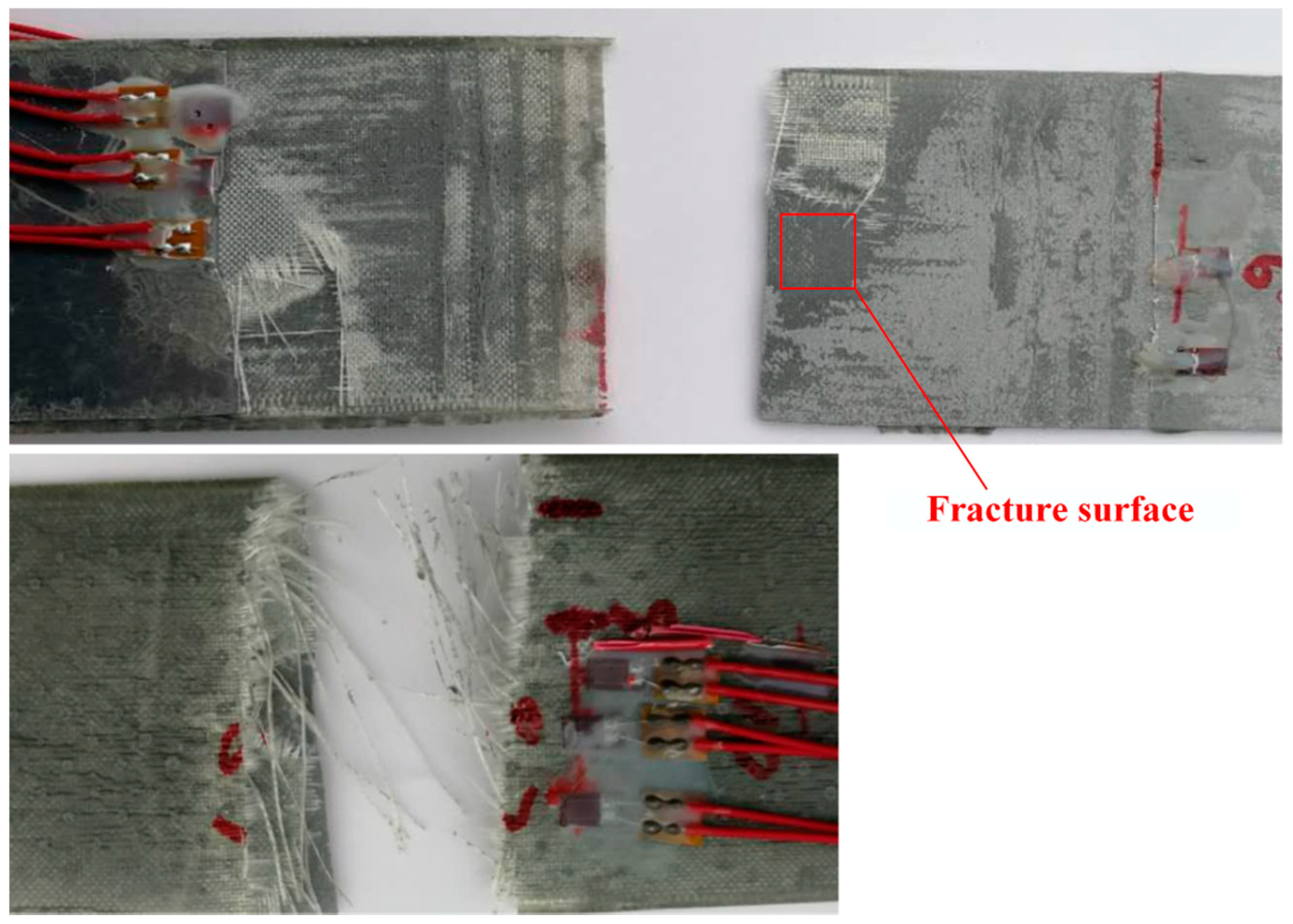
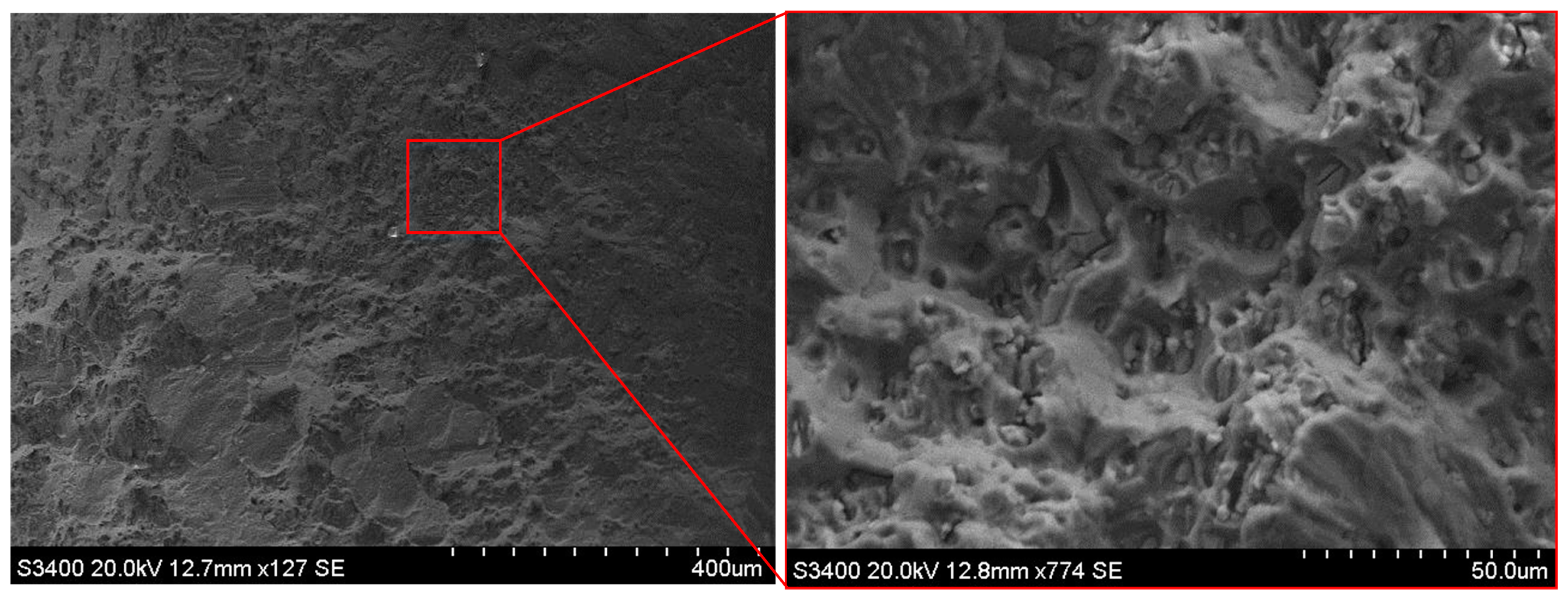

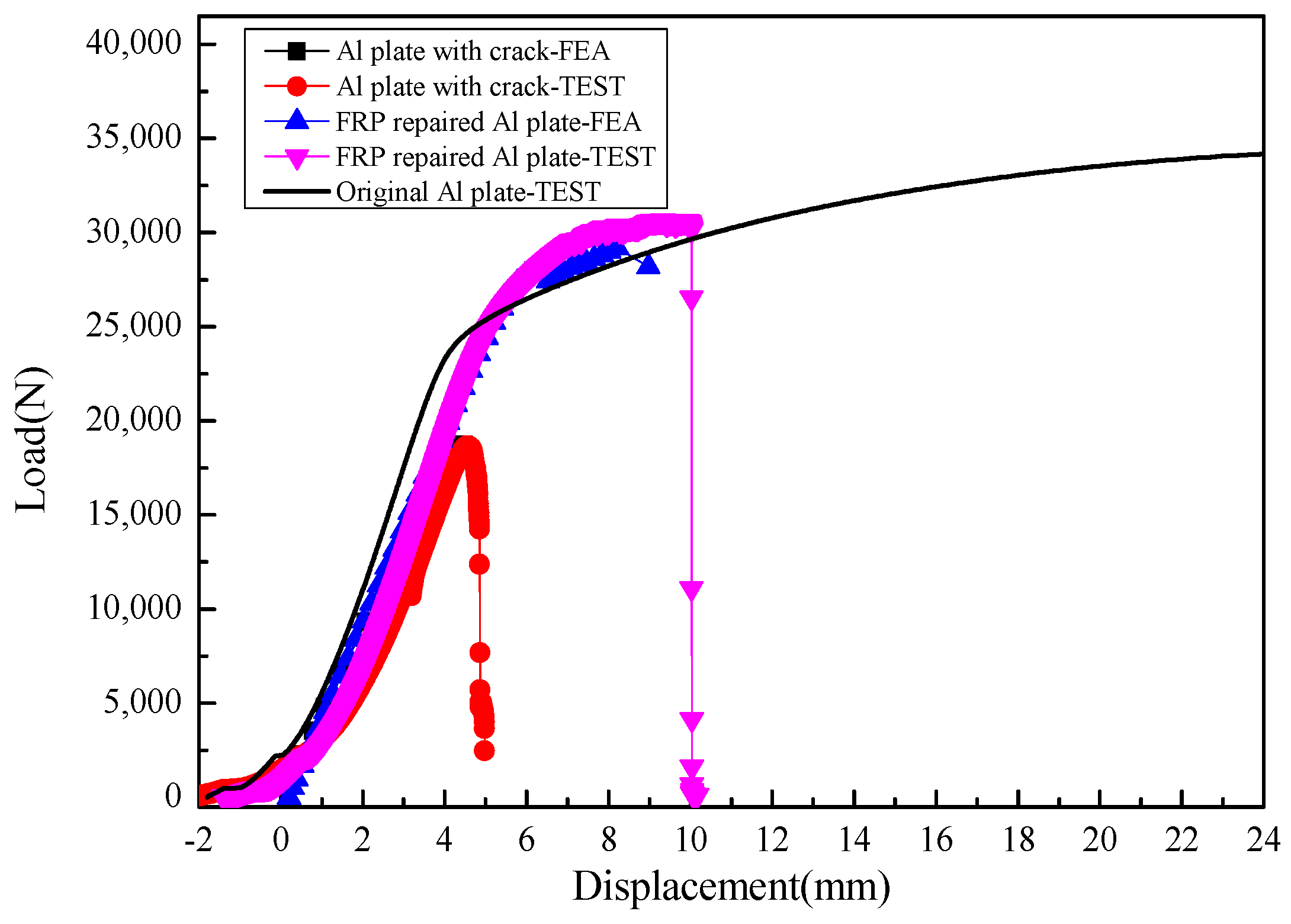
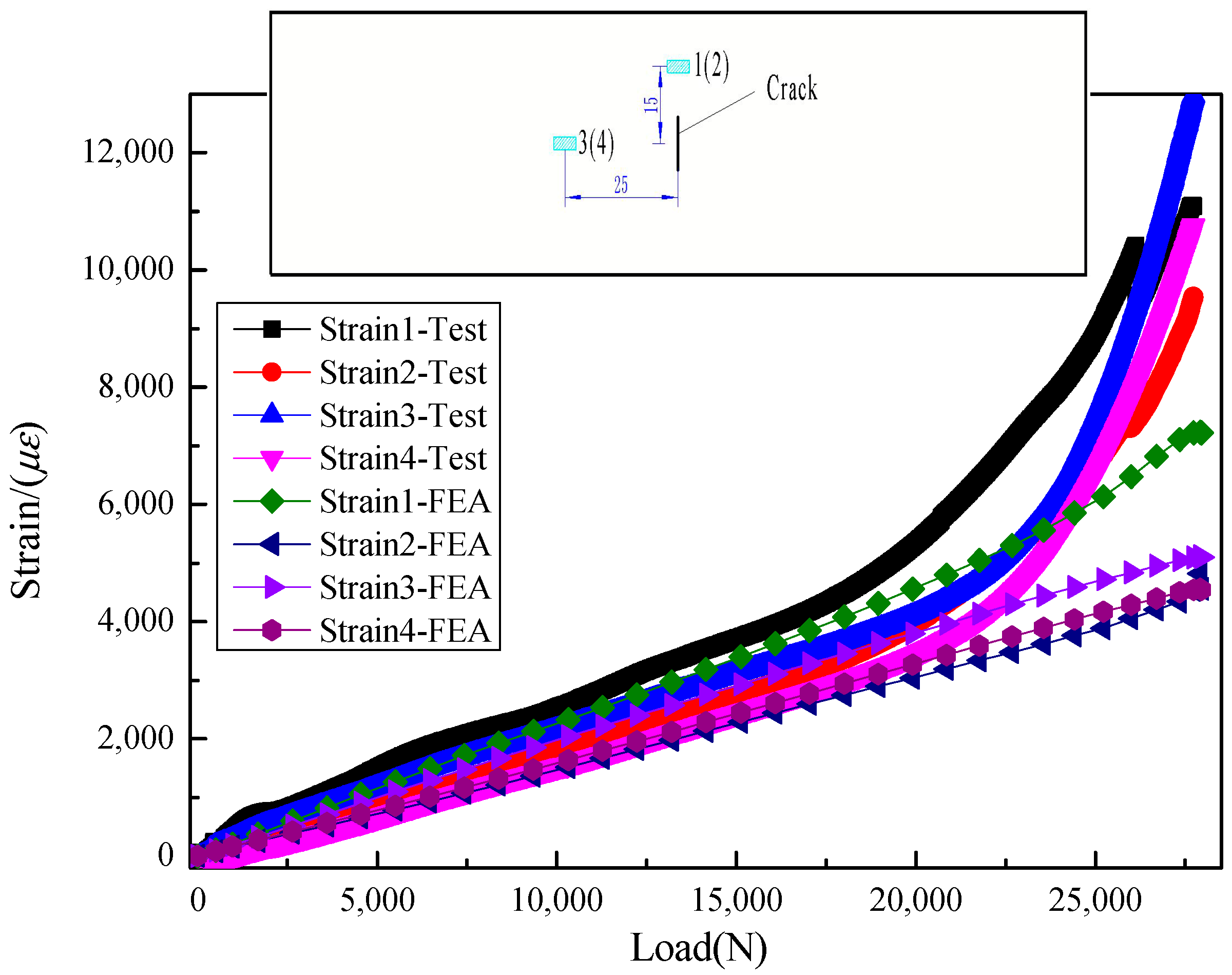
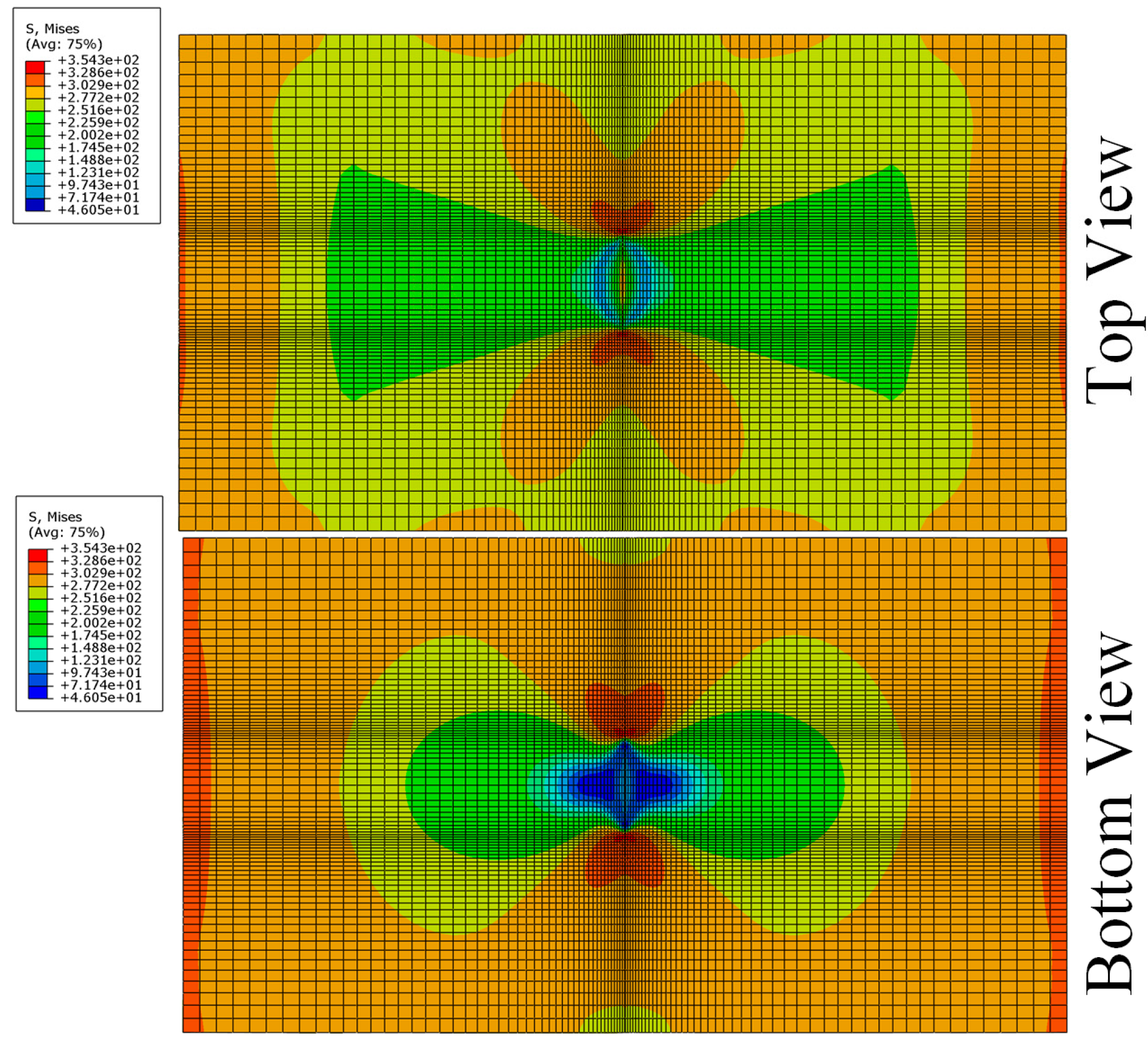
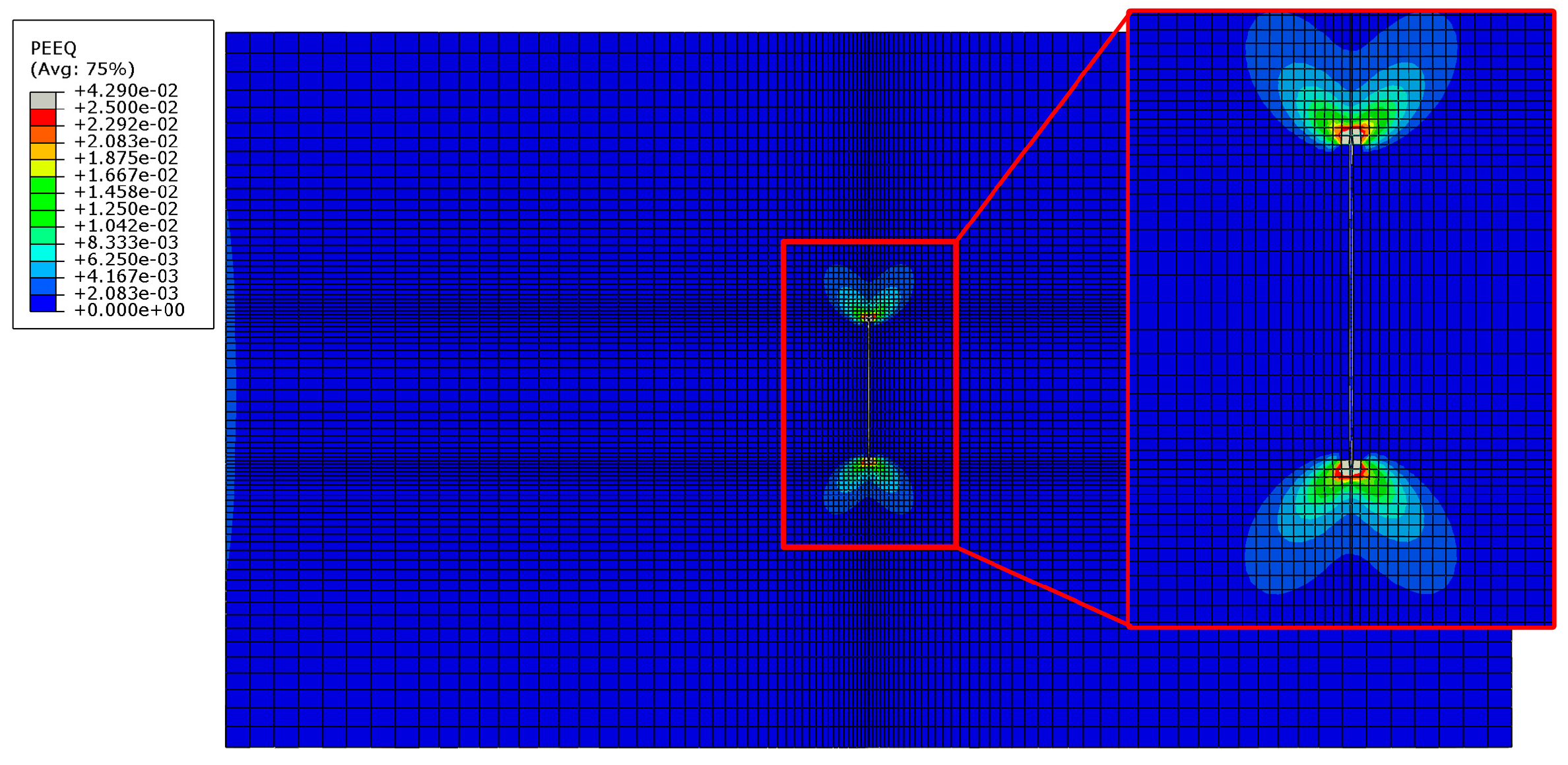
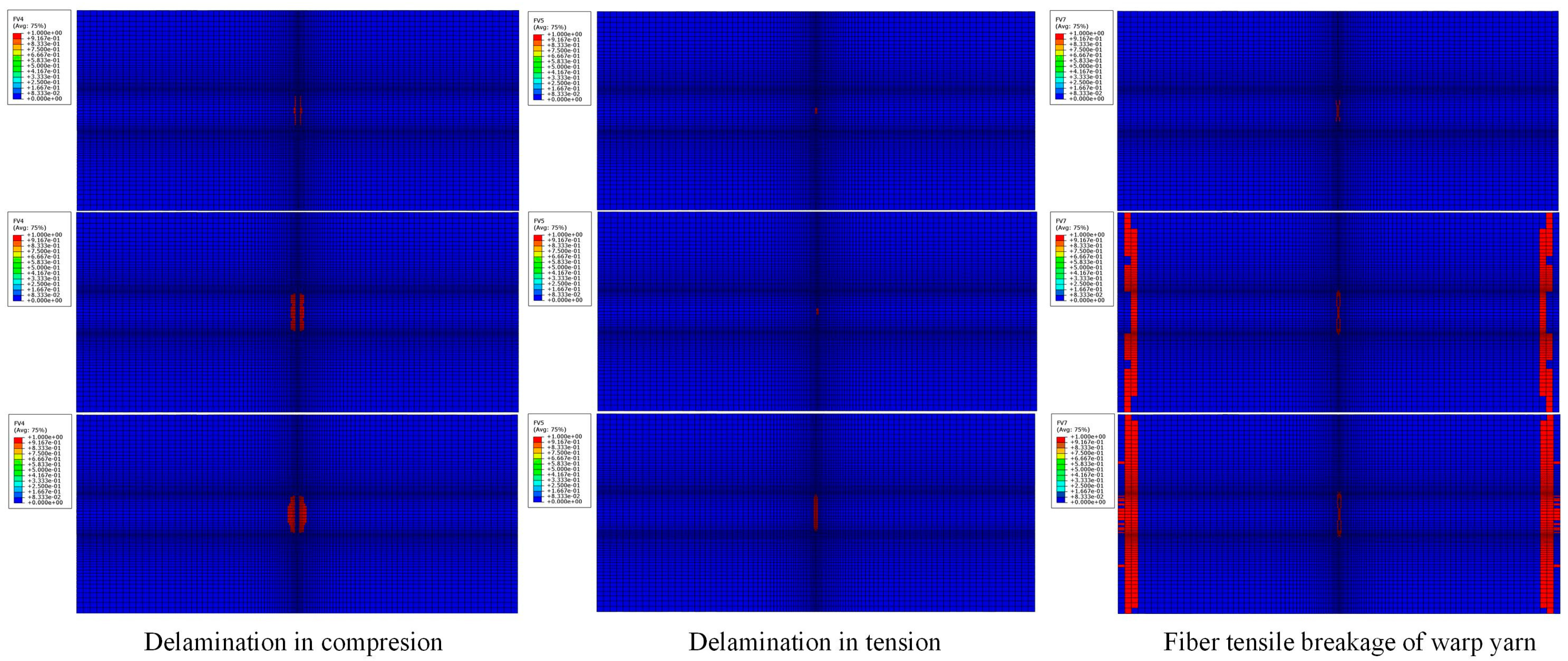
| Resin Type | EA9396 | EA9394 |
|---|---|---|
| Tensile strength (MPa) | 35.2 | 46 |
| Tensile modulus (GPa) | 2.750 | 4.237 |
| Elongation at tensile failure (%) | 3.4 | 1.66 |
| Shear strength (MPa) | 27.6 | 28.9 |
| Shear modulus (MPa) | 948.3 | 1461 |
| Viscosity (Pa·s) | ~3.5 | ~450 |
| Patch Material | Specimens with Triangle Patch | Specimens with Inverted Triangle Patch | ||||
|---|---|---|---|---|---|---|
| Ultimate Failure Load (kN) | Tesile Strength (Mpa) | Recovery Ratio (%) | Ultimate Failure Load (kN) | Tesile Strength (Mpa) | Recovery Ratio (%) | |
| SW90-a/EA9394 | 28.59 28.73 28.66 | 272.29 273.62 272.95 | 83.77 84.17 83.97 | 28.36 28.45 28.56 | 270.10 270.95 272.00 | 83.09 83.36 83.68 |
| Average | 28.66 | 272.95 | 83.97 | 28.46 | 271.05 | 83.39 |
| SW90-a/EA9396 | 28.01 28.35 27.97 | 266.76 270.00 266.38 | 82.07 83.06 81.95 | 27.92 27.32 28.62 | 265.90 260.90 272.57 | 81.80 80.05 83.86 |
| Average | 28.11 | 267.71 | 82.36 | 27.95 | 266.19 | 81.89 |
| SW90-a/EA9394+9396 | 28.70 29.08 29.15 | 273.33 276.95 277.62 | 84.09 85.20 85.41 | 28.14 28.86 28.49 | 268.00 274.86 271.33 | 82.45 84.56 83.47 |
| Average | 28.98 | 276.00 | 84.91 | 28.50 | 271.43 | 83.50 |
| Plain Weaved Glass Fabric Lamina Reinforced EA9394 Resin | ||||||||
|---|---|---|---|---|---|---|---|---|
| E11 (GPa) | E22 (GPa) | E33 (GPa) | G12 (GPa) | G23 (GPa) | G13 (GPa) | ν12 | ν23 | ν13 |
| 89.2 | 89.2 | 8.6 | 5.8 | 4.6 | 4.6 | 0.312 | 0.32 | 0.32 |
| XT (MPa) | XC (MPa) | YT (MPa) | YC (MPa) | S12 (MPa) | S23 (MPa) | S13 (MPa) | ZT (MPa) | ZC (MPa) |
| 745 | 419 | 745 | 419 | 83.2 | 83.2 | 83.2 | 69.2 | 69.2 |
| EA9394 Resin | ||||||||
| E (GPa) | ν | T (MPa) | G (MPa) | S (MPa) | Shear strain at failure (%) | - | ||
| 4.235 | 0.35 | 46 | 1461 | 28.9 | 1.66 | - | ||
| Al (LY12CZ) | - | - | - | - | - | - | ||
| E (GPa) | ν | Yielding stress (MPa) | - | - | ||||
| 72 | 0.33 | 327 | - | - | ||||
| Failure Modes | Degradation Rules of Laminate Material Properties |
|---|---|
| In-plane warp and fill direction failure in tension | E11 = 0.07E11, E22 = 0.07E22, E33 = 0.07E33, G12 = 0.07G12, G13 = 0.07G13, G23 = 0.07G23 v12 = 0.07v12, v23 = 0.07v23, v13 = 0.07v13 |
| In-plane warp and fill direction failure in compression | E11 = 0.14E11, E22 = 0.14E22, E33 = 0.14E33, G12 = 0.14G12, G13 = 0.14G13, v12 = 0.14v12, v23 = 0.14v23, v13 = 0.14v13 |
| In-plane shear-out failure | G12 = v12 = 0 |
| Out-of-plane delamination | E33 = G23 = G13 = v23 = v13 = 0 |
© 2020 by the authors. Licensee MDPI, Basel, Switzerland. This article is an open access article distributed under the terms and conditions of the Creative Commons Attribution (CC BY) license (http://creativecommons.org/licenses/by/4.0/).
Share and Cite
Dai, J.; Zhao, P.; Su, H.; Wang, Y. Mechanical Behavior of Single Patch Composite Repaired Al Alloy Plates: Experimental and Numerical Analysis. Materials 2020, 13, 2740. https://doi.org/10.3390/ma13122740
Dai J, Zhao P, Su H, Wang Y. Mechanical Behavior of Single Patch Composite Repaired Al Alloy Plates: Experimental and Numerical Analysis. Materials. 2020; 13(12):2740. https://doi.org/10.3390/ma13122740
Chicago/Turabian StyleDai, Jingtao, Peizhong Zhao, Hongbo Su, and Yubo Wang. 2020. "Mechanical Behavior of Single Patch Composite Repaired Al Alloy Plates: Experimental and Numerical Analysis" Materials 13, no. 12: 2740. https://doi.org/10.3390/ma13122740
APA StyleDai, J., Zhao, P., Su, H., & Wang, Y. (2020). Mechanical Behavior of Single Patch Composite Repaired Al Alloy Plates: Experimental and Numerical Analysis. Materials, 13(12), 2740. https://doi.org/10.3390/ma13122740




